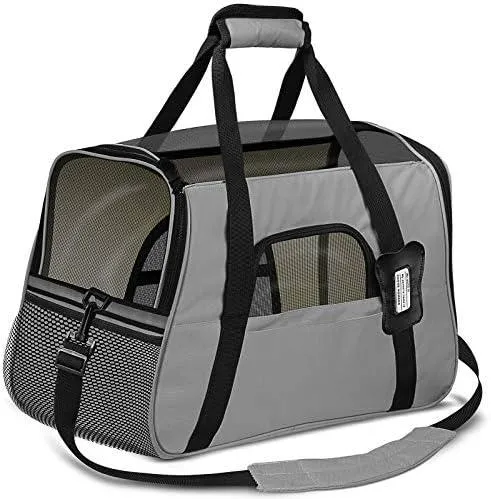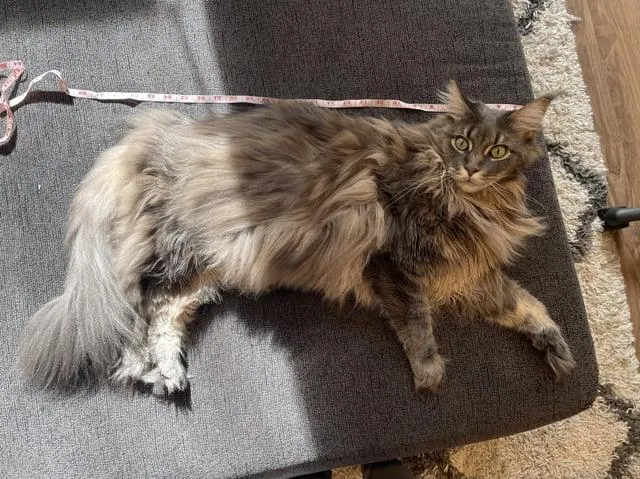Your Guide to Finding the Best Airline-Approved Cat Carrier for Under-Seat Travel
Whether you’re taking a vacation with your feline friend or relocating to a new home, traveling by air with your cat can be a stressful experience for both of you. With the right preparation and equipment, you can make flying much less turbulent. In this article, I’ll cover all the different options for airline-approved cat carriers that fit safely under the seat and help ensure a smoother journey for you and your furry companion.
Understanding Size Regulations
To start, let’s review the size limits set by the major airlines. Most carriers only allow cats to travel in the cabin if kept inside a carrier that fits completely under the seat in front of you. The maximum dimensions are typically:
- Length: 18 inches
- Width: 14 inches
- Height: 9 inches
These rules are in place to keep the carriers from obstructing walkways or sticking out into the aisle where they could pose a tripping hazard. Pay close attention to these measurements before purchasing a carrier, as airlines won’t allow anything oversized onboard without a ticketed seat.
Hard-Sided Versus Soft-Sided
Within the size restrictions, you have the options of either a hard carrier or soft-sided travel bag. Here are some factors to consider for each type:
From my experience traveling by plane regularly with cats, I’ve found hard-sided carriers provide better security and sturdiness. Since they can’t collapse if weight is applied, there’s no risk of your cat slipping out mid-flight. However, hard carriers tend to be heavier and less flexible to store compared to soft-sided bags.
On the other hand, soft carriers are more lightweight, compact, and easy to transport. The breathable mesh sides also help cats feel less closed-in. Nevertheless, if not zipped entirely, there’s a chance your scaredy-cat could pop out! Soft carriers additionally require extra padding for comfort.
Overall, I’d recommend a hard carrier for long trips involving connections when handling may be rougher. But soft-sided bags work well for direct, shorter flights under 2 hours where there’s less potential stress on your kitty.

Portable Pick-Ups
Below are some top-rated airline-approved cat carriers that fit neatly under the seat for stress-free travel:
Petmate Sky Kennel – At 16.8″ x 11.8″ x 9.8″, this durable hard carrier is pretty sizable while staying regulation size. It has two slide-bolt doors, reinforced corners, and ventilation windows for optimal visibility. Pricing around $40 makes it a sensible budget choice.
Snoozer Lookout Soft Carrier – Measuring 15″ x 10″ x 11″, the lightweight Lookout is extremely portable yet securely enclosed with zipped sides. The mesh allows breathing and peeking. A cozy plush lining helps ease cats into the cab. About $30 is fair value here.
Sleepypod Air Travel Pet Carrier – A high-end pick, this impact-resistant soft carrier has reinforced edges and clips to keep it fully zipped. Breathable fabric reduces stress while letting your cat see outside. At $125, it offers great security and peace of mind for your panicky pet.
Pet Magasin Airline Approved Bag – At just 11.8″ x 7.9″ x 6.3″, this ultra portable soft carrier packs down super petite yet gives adequate space. It’s minimalist and affordable at around $25. An ideal choice when flying budget or commuter airlines with stricter sizing.
From my experience, all these options meet airline regulations and prioritize your cat’s well-being. Choosing the right size and features depends on factors like your pet’s temperament, flight duration, and amount you wish to spend. Test runs at home help prepare shy cats for takeoff too!
Additional Tips
Aside from nailing down the ideal carrier, here are some extra tricks I’ve learned over time traveling by plane with cats:

– Bring along your cat’s favorite toy or blanket to make the carrier more homey. This helps soothe nerves.
– Consider sedative aids like calming treats if your cat is highly anxious. Consult your vet first.
– Cover the carrier with a light towel to block outside stimulation. My cat kind of likes her private bubble.
– Make veterinary records and vaccinations easily accessible at check-in. Airlines may ask to review.
– Pack extra water, litter, and emergency kitty supplies in your carry-on in case of delays. You never know!
– Reserve boarding early to avoid last-minute stress. Most airlines halt transport if animal weight exceeds 20 pounds anyways.
With the right preparation and research into compliant cat carriers, flying with your feline friend need not be totally dreadful. I hope these pointers provide the low-down you need to pick the purrfect solution! Let me know if any other questions come up.

Approved Airline Cat Carriers Under Seat
| Carrier | Size | Weight | Soft or Hard? | Handle/Strap? |
|---|---|---|---|---|
| Pet Peppy Portable Folding Carrier | 16x11x11 inches | 4.4 pounds | Soft-sided | Carry handle and shoulder strap |
| Amazon Basics Foldable Mesh Animal Carrier | 15.4×10.6×10.6 inches | 2.4 pounds | Soft and mesh panels | Dual carrying handles |
| SleepyPod Airport Pet Carrier | 15×10.5×11 inches | 4 pounds | Hard plastic and fabric | Dual carrying handles |
| Petmagasin Soft-Sided Pet Carrier | 15.7×11.8×11 inches | 4 pounds | Soft with mesh windows | Single carrying handle |
| PETLINC Soft-Sided Pet Carrier | 16x12x11 inches | 3.5 pounds | Soft with mesh windows | Single carrying handle |
FAQ
-
What size cat carrier can I bring on the plane under the seat?
Most major airlines allow soft-sided cat carriers to be stored beneath the seat in front during a flight. The carrier needs to fit under the seat and cannot take up leg room or block the aisle. Carriers generally cannot be larger than about 18 inches by 14 inches by 10 inches.
-
Do I need to pay extra for my cat carrier under the seat?
No additional fees are usually charged as long as the carrier fits safely under your seat. However, some low-cost carriers may charge a small pet fee. Rules can differ based on the airline, so it’s advisable to check individual policies on their website.
-
Is my cat required to stay in the carrier the whole flight?
For the safety of all passengers and crew, cats must remain inside their carrier unless there is a layover where they are allowed to be briefly removed for things like using a litterbox. While it can be tempting to cuddle them during turbulence, regulations exist to prevent accidents that could endanger others. So it’s best to respect the carrier rules even if your cat seems calm.
-
Won’t my cat be stressed in the carrier for hours?
You’re right that long periods confined in a small space can cause worry for some felines. To help minimize stress: provide toys and treats, use calming aids like pheromones, and accustom your cat to the carrier beforehand with short practice trips. You might also ask the vet about a light sedative if flying really puts your furry friend on edge. At the same time, remember that following carrier rules protects everyone, especially during takeoffs and landings.
-
Can I bring more than one cat in carriers?
Most carriers are designed for just one cat each. While some airlines may allow two small kittens to share, it’s usually best to put solo cats in separate carriers to avoid tensions rising mid-flight. Moreover, regulations usually specify a maximum number of carriers permitted per passenger. So perhaps consider leaving additional cats at home or checking them as cargo if there are multiple traveling felines.
-
What else do I need for my cat’s in-cabin travel?
In addition to an approved carrier, bring essentials like extra kitty litter, bowls, interactive toys and your cat’s favorite blanket or bedding to keep them content. I’d also advise having documents like medical records, vaccinations, identification and travel instructions all together in a folder in case asked. And don’t forget any medications, of course! Preparedness makes the journey easier for man and beast.
-
Are there any times I can’t fly with a cat in cabin?
During hotter months, some airlines prohibit transporting cats or other animals in the cabin due to concerns over high ambient temperatures. You’ll likely have to check them as cargo instead if traveling then. Additionally, certain routes involving long layovers in areas too hot for animals unattended may mean cargo is the only available option. So review policies thoroughly before booking flights with your feline friend.

-
What if my cat starts crying or meowing loudly?
If your kitty gets really vocal, it could potentially disturb other passengers despite your best efforts. In that event, personnel may need to relocate you or take further actions like placing your cat in the cargo hold instead of cabin. Basically it’s in everyone’s interests for cats to ride quietly and calmly. So do prepare your furry flier well and be ready with calming techniques or a back-up plan just in case they act out on the airplane.
